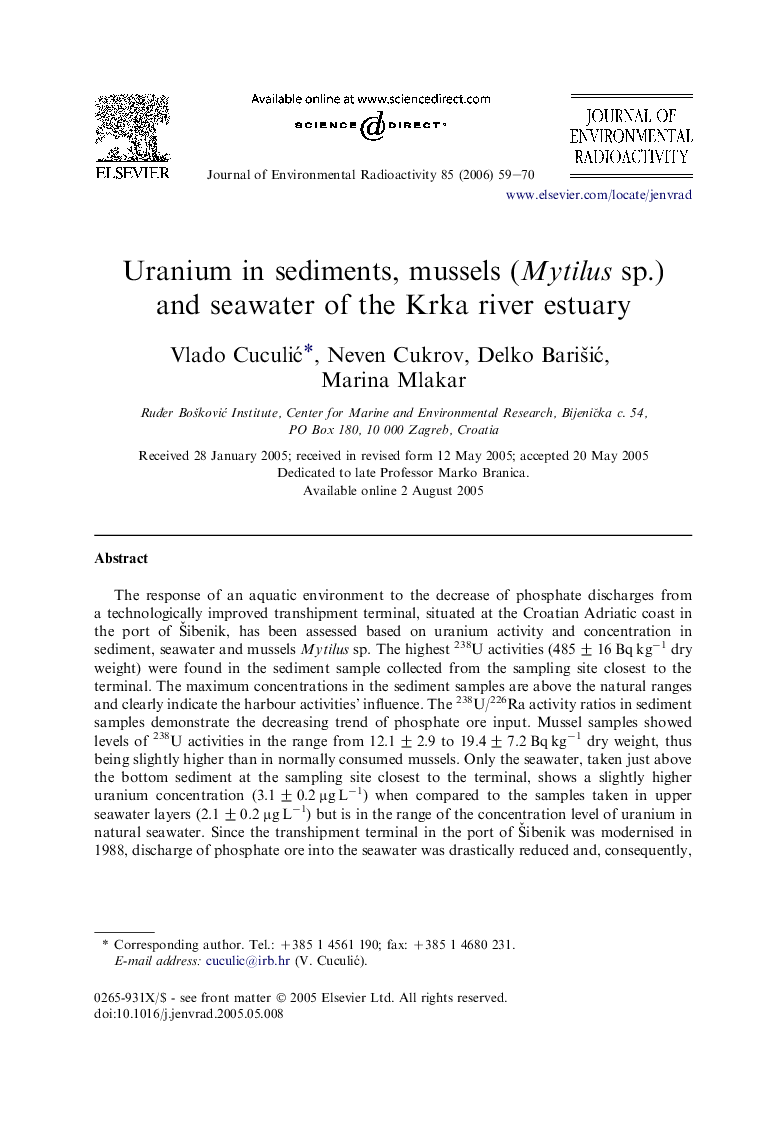| Article ID | Journal | Published Year | Pages | File Type |
|---|---|---|---|---|
| 1739667 | Journal of Environmental Radioactivity | 2006 | 12 Pages |
The response of an aquatic environment to the decrease of phosphate discharges from a technologically improved transhipment terminal, situated at the Croatian Adriatic coast in the port of Šibenik, has been assessed based on uranium activity and concentration in sediment, seawater and mussels Mytilus sp. The highest 238U activities (485 ± 16 Bq kg−1 dry weight) were found in the sediment sample collected from the sampling site closest to the terminal. The maximum concentrations in the sediment samples are above the natural ranges and clearly indicate the harbour activities' influence. The 238U/226Ra activity ratios in sediment samples demonstrate the decreasing trend of phosphate ore input. Mussel samples showed levels of 238U activities in the range from 12.1 ± 2.9 to 19.4 ± 7.2 Bq kg−1 dry weight, thus being slightly higher than in normally consumed mussels. Only the seawater, taken just above the bottom sediment at the sampling site closest to the terminal, shows a slightly higher uranium concentration (3.1 ± 0.2 μg L−1) when compared to the samples taken in upper seawater layers (2.1 ± 0.2 μg L−1) but is in the range of the concentration level of uranium in natural seawater. Since the transhipment terminal in the port of Šibenik was modernised in 1988, discharge of phosphate ore into the seawater was drastically reduced and, consequently, uranium concentration levels in seawater have decreased. However, enhanced uranium activity levels are still found in deeper sediment layer samples and in mussel.
